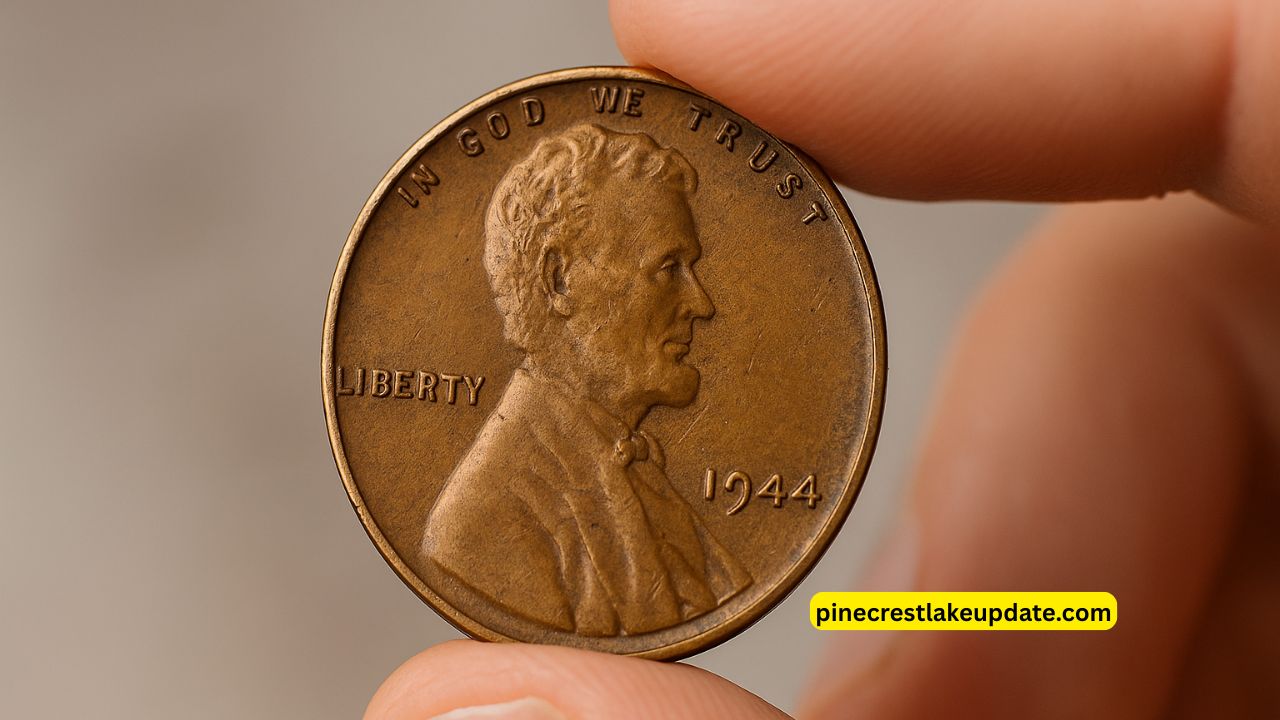The 1944 Wheat Penny is a fascinating piece of American numismatic history. While many of these coins are common and hold modest value, certain rare errors and mint mark variations can make them highly sought after by collectors.
This article delves into the details that can significantly impact the worth of your 1944 Wheat Penny.
Understanding the 1944 Wheat Penny
Design and Composition:
- Obverse: Features a portrait of Abraham Lincoln.
- Reverse: Showcases two wheat stalks, hence the name “Wheat Penny.”
- Composition: Primarily made of 95% copper and 5% zinc.
- Weight: Approximately 3.11 grams.
Historical Context: In 1943, due to copper shortages during World War II, pennies were made from zinc-coated steel.
However, in 1944, the U.S. Mint returned to using copper, utilizing recycled shell casings from the war effort. This historical shift adds a layer of intrigue to the 1944 Wheat Penny.
Mint Marks and Their Significance
The mint mark on a coin indicates the U.S. Mint facility where it was produced. For the 1944 Wheat Penny, there are three primary mint marks:
- No Mint Mark (Philadelphia):
- Mintage: Approximately 1.4 billion coins.
- Value: In circulated condition, these coins are generally worth between $0.20 and $0.90. Uncirculated examples can fetch higher prices, depending on their grade.
- “D” Mint Mark (Denver):
- Mintage: Around 430 million coins.
- Value: Similar to the Philadelphia mint, with circulated coins valued between $0.20 and $0.90. Uncirculated coins can be worth more.
- “S” Mint Mark (San Francisco):
- Mintage: Approximately 282 million coins.
- Value: Circulated coins range from $0.30 to $0.60. Uncirculated examples can command higher prices, especially in superior grades.
Rare Errors and Their Impact on Value
Certain errors in the minting process can make a 1944 Wheat Penny exceptionally valuable:
- 1944 Steel Penny:
- Description: A rare error where some pennies were mistakenly struck on steel planchets left over from 1943.
- Identification: These coins are magnetic and have a silver-gray appearance.
- Value: Extremely rare, with some examples selling for over $100,000.
- 1944-D/S and 1944-S/D Overmint Marks:
- Description: Coins where the mint mark from one facility was stamped over another (e.g., “D” over “S”).
- Value: Depending on the coin’s condition, these can be worth from $50 to several hundred dollars.
- Double Die Errors:
- Description: Coins that exhibit a noticeable doubling of design elements, such as the date or lettering.
- Value: These errors can significantly increase a coin’s value, often ranging from $20 to several hundred dollars.
- Off-Center Strikes and Clipped Planchets:
- Description: Errors resulting in misaligned designs or missing portions of the coin.
- Value: Depending on the severity and uniqueness, these can add a premium to the coin’s value.
Value for 1944 Wheat Pennies
| Mint Mark | Mintage | Circulated Value | Uncirculated Value | Notes |
|---|---|---|---|---|
| None (Philadelphia) | ~1.4 billion | $0.20 – $0.90 | Up to $5 | Common; higher grades fetch more |
| “D” (Denver) | ~430 million | $0.20 – $0.90 | Up to $5 | Similar to Philadelphia mint |
| “S” (San Francisco) | ~282 million | $0.30 – $0.60 | Up to $5 | Slightly more valuable due to lower mintage |
| 1944 Steel Penny | Extremely rare | Over $100,000 | Up to $1 million | Error coin; highly sought after |
| 1944-D/S or 1944-S/D | Rare | $50 – $500 | Varies | Overmint mark errors |
| Double Die Errors | Varies | $20 – $300 | Varies | Depends on the prominence of the error |
The 1944 Wheat Penny is more than just a piece of currency; it’s a snapshot of American history. While many are common and hold modest value, certain errors and mint mark variations can make them highly desirable to collectors.
If you believe you possess a rare variant, consulting with a professional coin appraiser or numismatist can provide clarity on its value. Always handle coins carefully and consider their historical significance when evaluating their worth.
FAQs
How can I identify a 1944 Steel Penny?
A 1944 Steel Penny has a silver-gray appearance and is magnetic. If your 1944 penny sticks to a magnet, it might be one of these rare error coins.
What does a double die error look like?
A double die error will show noticeable doubling of design elements, such as the date or lettering. This can often be seen without magnification but is more apparent under a loupe.
Are 1944 Wheat Pennies without a mint mark valuable?
While common in circulated condition, uncirculated examples or those with unique errors can be more valuable. The absence of a mint mark indicates it was minted in Philadelphia.

